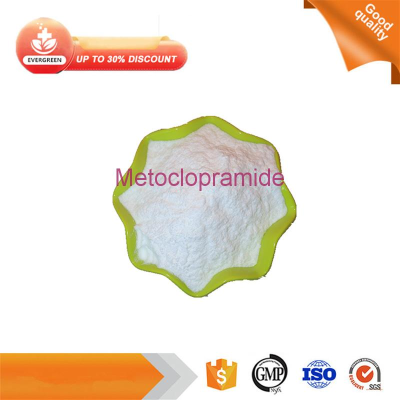-
Categories
-
Pharmaceutical Intermediates
-
Active Pharmaceutical Ingredients
-
Food Additives
- Industrial Coatings
- Agrochemicals
- Dyes and Pigments
- Surfactant
- Flavors and Fragrances
- Chemical Reagents
- Catalyst and Auxiliary
- Natural Products
- Inorganic Chemistry
-
Organic Chemistry
-
Biochemical Engineering
- Analytical Chemistry
- Cosmetic Ingredient
-
Pharmaceutical Intermediates
Promotion
ECHEMI Mall
Wholesale
Weekly Price
Exhibition
News
-
Trade Service
Proton pump inhibitors (PPIs) are widely used to treat and prevent gastroesophageal reflux disease (GERD), reflux esophagitis, gastric and duodenal ulcers, eosinophilic esophagitis, Helicobacter pylori (Hp) infection, and pathological hypersecretory states
in adults and children.
Most PPIs are extensively metabolized to inactive substances primarily by hepatic cytochrome P450 2C19 (CYP2C19) enzymes, and the CYP2C19 genotype is associated with PPI exposure, efficacy, and side effects.
Potential benefits of using the CYP2C19 genotype to guide PPI treatment include:
(1) predicting lower blood drug concentrations in patients based on genotype and increasing the dose administered to improve drug efficacy; (2) According to the genotype, the patient's blood concentration is predicted to be higher, and the dose administered is reduced to minimize the risk of toxicity associated with long-term use of PPI, especially in the case of
high plasma concentration.
This article summarizes the key points of the "2020 CPIC Guidelines: CYP2C19 and Proton Pump Inhibitor Dosing Dose" guidelines to facilitate clinicians to interpret the CYP2C19 gene test results and guide the prescribing
of PPI drugs.
The relationship between genetic variation and drug-related phenotypes
First-generation PPIs: omeprazole, lansoprazole and pantoprazole
with blood levels and efficacy of first-generation PPIs.
Several studies have shown that patients with CYP2C19 intermediate metabolite (IM) and slow metabolic (PM) are associated with reduced PPI clearance and increased blood levels compared with CYP2C19 normal metabolites (NMs), leading to increased treatment success rates, including Helicobacter pylori infection and erosive esophagitis
.
Conversely, patients with CYP2C19 fast metabolizing (RMs) and ultrafast metabolizing (UMs) have higher PPI clearance and lower
plasma concentrations of PPIs compared with CYP2C19 normal metabolites (NMs).
Therefore, patients with CYP2C19 fast metabolite (RMs) and ultrafast metabolized (UMs) have a higher risk of PPI treatment failure compared to CYP2C19 normal metabolites (NMs), intermediate metabolites (IMs), and slow metabolized (PMs).
It is important to note that most CYP2C19 studies evaluating PPI have been conducted in Asian populations, where the frequency of the CYP2C19 functional enhancement allele is lower compared to non-Asians; As a result, studies including CYP2C19 rapid metabolites (RMs) and ultrafast metabolites (UMs) have been rarely published
to date.
The guideline prescribing recommendations for CYP2C19 are based on differences in pharmacokinetics between rapid metabolized (RMs) and ultrafast metabolized (UMs) and normal metabolized (NMs) and differences
in PPI efficacy between normal metabolites (NMs) and intermediate metabolized (IMs)/slow metabolized (PMs).
Table Dosing recommendations for omeprazole, lansoprazole, pantoprazole, and dexlansoprazole based on the CYP2C19 phenotype
have less
evidence of correlation between plasma concentrations and efficacy of second-generation PPIs and the CYP2C19 gene considering the number and relevance of studies.
The certainty of evidence for the CYP2C19 genotype related to serum concentrations, efficacy, and toxicity of esomeprazole, rabeprazole, and
dexlansoprazole was moderate or low.
Although there are less data on the effect of the CYP2C19 genotype on dexlansoprazole compared to the first-generation PPI, the effect of predicting the pharmacokinetics and efficacy of the CYP2C19 gene on dexlansoprazole is similar due to the similar
metabolic pathway with lansoprazole 。 Due to inconsistent studies on the effect of the CYP2C19 genotype on the pharmacokinetics and therapeutic efficacy of esomeprazole and rabeprazole, guidelines do not recommend
these second-generation PPIs.
Content excerpted from: 2020 CPIC Guidelines: Dosing of CYP2C19 and Proton Pump Inhibitors
Translator: Department of Pharmacy, First Affiliated Hospital of Tsinghua University Wang Wenjing Wang Jiao Dong Moran Ishida Yu (Translation) Wan Liyan Yuan Liping (Proofreader)
Click "Read Original" to download the full article







